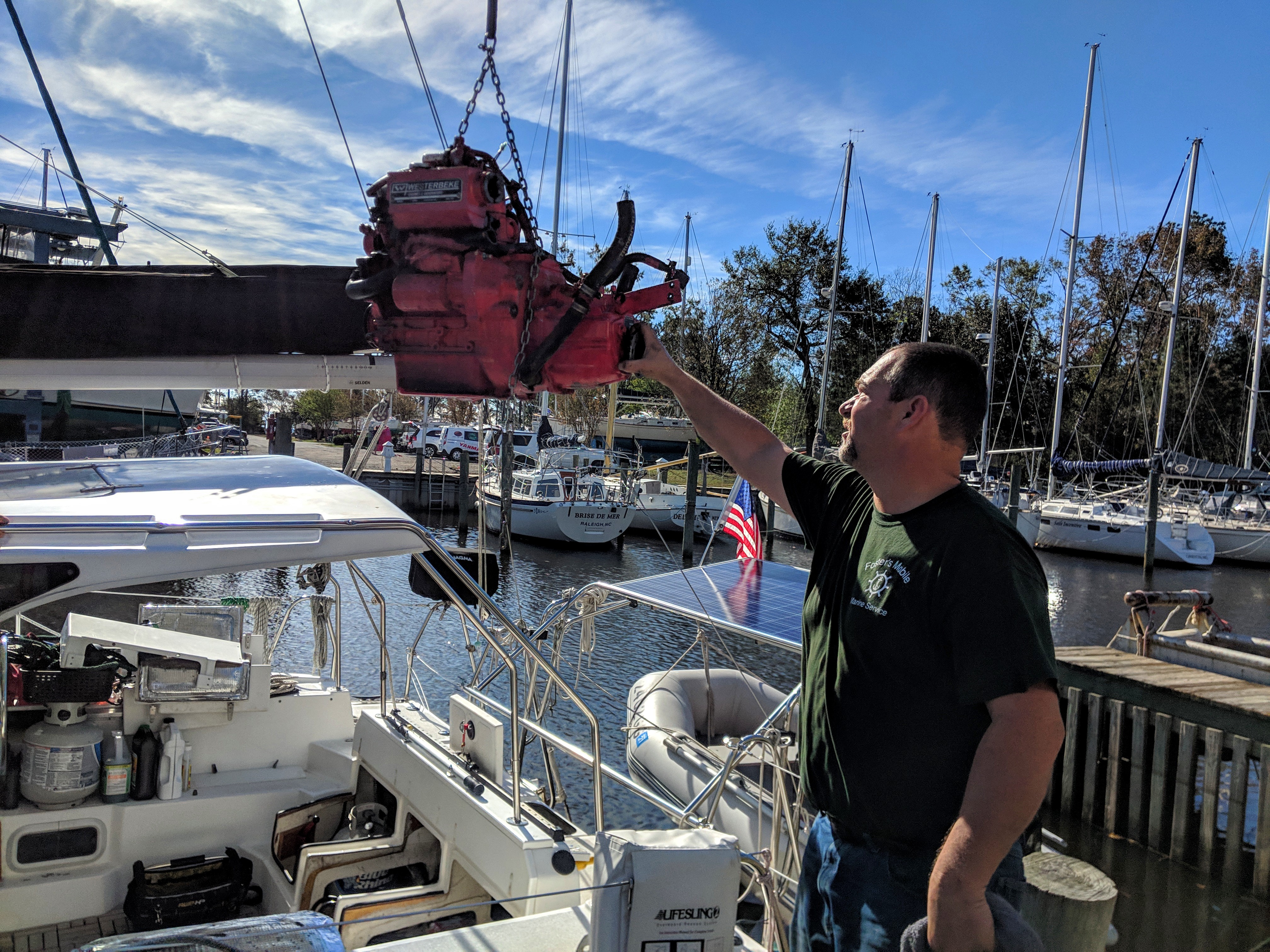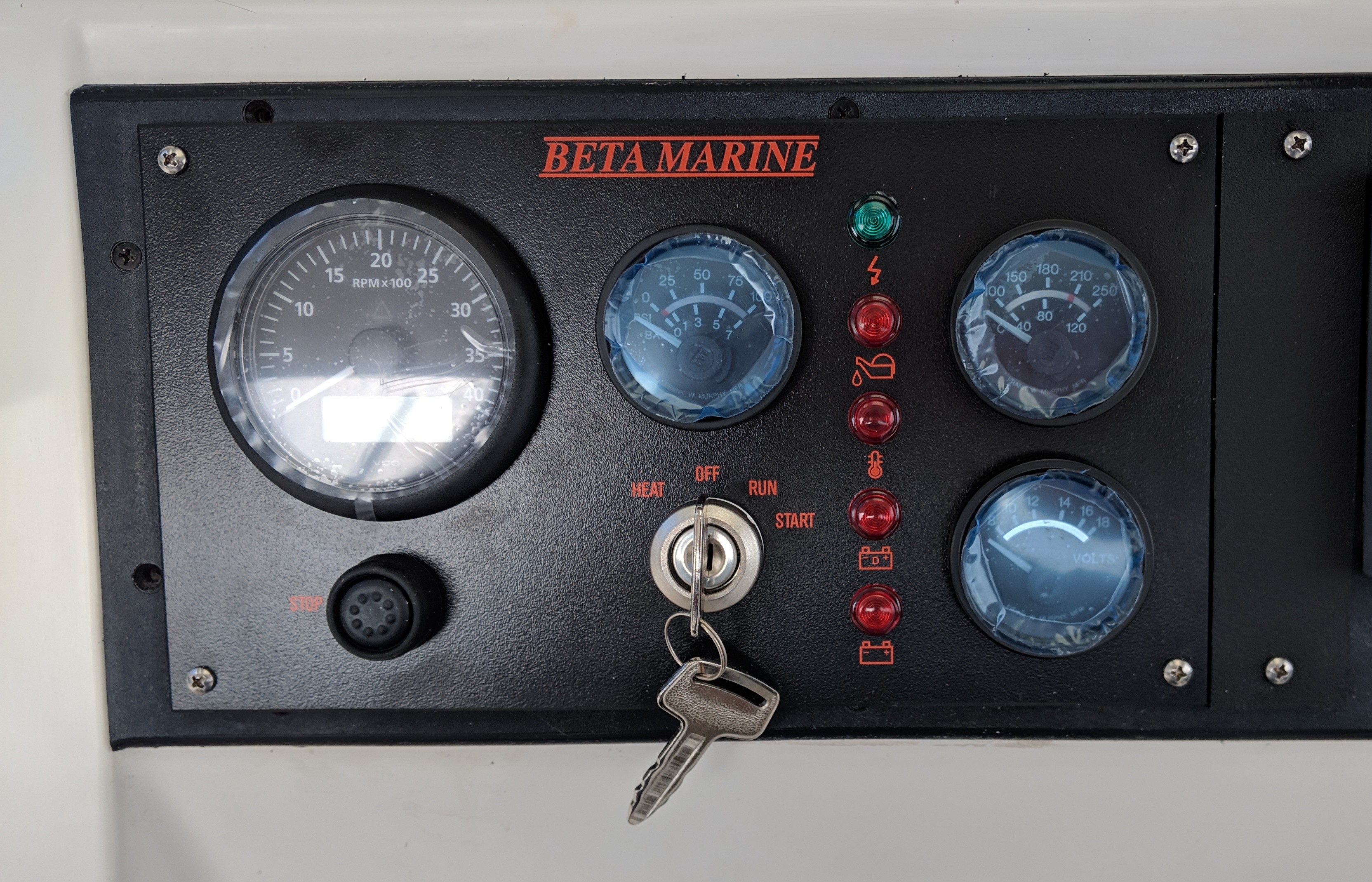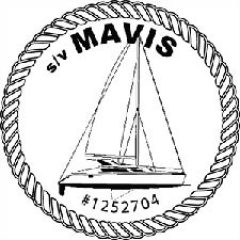Today was a big day. Darrell Foster, our amazing mechanic arrived early to begin taking out our old engine and control panel. To be clear, Darrell is not the original mechanic we started working with here in Oriental. He’s a retired Coast Guard mechanic and this guy is not playing around! About 2 hours after he arrived the old engine was hanging from a crane and set on the ground. Then he took off to get the new control panel and wiring harness. A few hours later, the new panel was installed and everything is set for the new engine to be installed on Friday.

Although, I thought his estimate on the number of hours this job would take was unrealistic, according to Darrell, we are way ahead of schedule so far! This makes me pretty happy because barring any major issues with the installation, I expect that we will come in on time and under budget which in the marine world is absolutely unheard of. The new engine is slated to be installed Friday morning and I’m really looking forward to feeling Mavis’ new engine come to life. After the engine was removed, Darrell said “NOW you’ve got yourself a sailboat.” I took a moment to contemplate that. I love sailing and have been known to resist the temptation to just turn on the engine. But when you’re traveling over 1,500 miles, you kind of need to keep moving. Generally, I try to maintain a boat speed of better than 5 knots and if I’m not getting that from the wind I’ll switch on the motor. Many people don’t know this but the vast majority of the Intracoastal Waterway is just not sailable. You really need to motor day after day for 8-plus hours a day to get anywhere on the inland waterway. It is narrow and quite tricky in spots. There’s just no room to sail and travelling by night is asking for trouble unless you are intimately familiar with the local waters. There’s way too much to hit out here. Once I have developed a level of confidence in the new powerplant, I plan to jump out into the ocean and hoist the sails. Cindy and I both miss the magical feeling of sailing along with no engine making noise and burning fuel. Whenever I sail any distance at all I feel like I’m getting away with something.
Speaking of burning fuel. Our new engine is expected to burn just 1/3 of a gallon an hour at cruise speeds. I was pretty amazed that the old Westerbeke could go on about a gallon an hour. If these numbers are anywhere near correct, the new engine will effectively triple Mavis’ range on engine power! With 36 gallons of fuel on board, we could travel on the engine alone for 600 to 700 nautical miles without refueling! Even if we end up consuming a whopping 1/2 a gallon an hour we could go 400 to 500 nautical miles. I’d be happy with that. This would mean that here, on the Intracoastal we could motor for days without having to fuel up.
Mavis’ fuel gauges have always been incredibly unreliable. As a pilot, I’ve been trained to largely ignore fuel quantity indicators and know what my fuel consumption is. When I realized that the new panel wouldn’t fit in the hole for the old panel without some modifications, I elected to remove the fuel gauges. At some point in the future, I’ll install some modern fuel quantity sensors and tie it all in with our chart plotter. Until then, I need to keep track of how many hours I’ve run on each of our two tanks between fill ups.

As I do every day, I spent some time reviewing the nautical charts for the voyage ahead. We are 140 nautical miles from the South Carolina border. Here on the ICW where 50 miles takes us from sunrise to just about sunset it will be three full days of breaking in the new motor before we can do our next “New State Dance.” It’s about 460 nautical miles (on the ICW) to the Florida-Georgia border. Sailing on the ocean shaves of some miles. The other very significant advantage of sailing “outside” vs. “inside” is that when coastal cruising on the ocean the boat is moving forward 24/7. On the ICW we run from sunrise to sunset and then find a place to anchor or dock. So by sailing offshore and taking shifts at the helm we can easily cover 100 to 150 miles in each 24 hour day vs. 40 to 55! Why spend time sitting on the anchor when the boat can (and in my opinion SHOULD) keep on sailing? And if the wind is cooperating, there’s no need to run the engine, racking up hours, making noise, burning fuel and putting out fumes. Mavis, like most sailing catamarans is capable of sailing considerably faster than she can motor!
We’re not sailing on a schedule but I would like to make up some miles. I’ll be able to relax once we are safely set up at our Florida headquarters in Stuart, at which time I plan to fly home and get one of our cars. Once established in Florida, I also need to start getting some workouts in. I’ve lost an insane amount of not easily gained muscle mass in the past month of inactivity! I have also lost a lot of what little cardiovascular capacity I had! I ran about 3/4 of a mile yesterday at a casual pace and was shocked to find myself winded. I hope it all comes back as quickly as it went away but I don’t think it works that way!

It’s been balmy here in Oriental! Today was 82 but most days have been in the mid to high 70s and only getting down to the high 50s at night but this will change Sunday… We are expecting highs in the 50s and lows around FREEZING for a day or two. We need to get SOUTH!
Capt Frank
